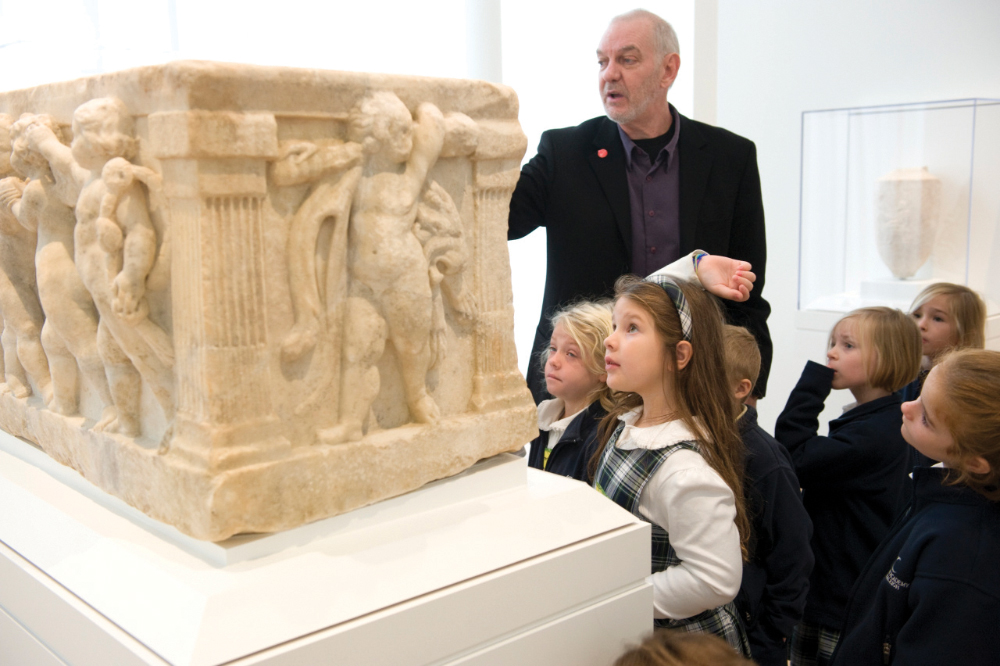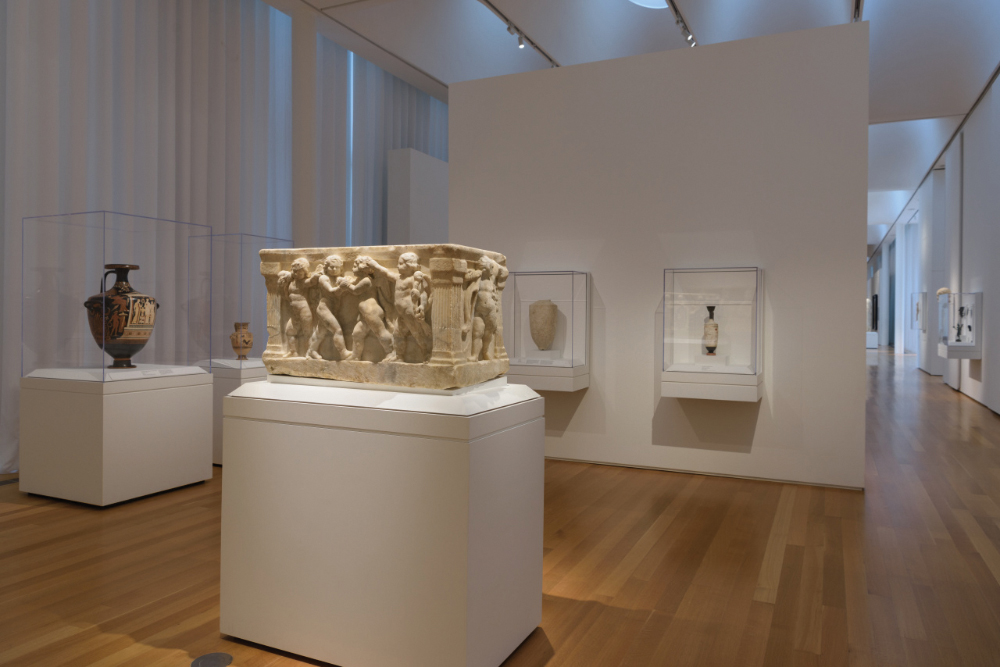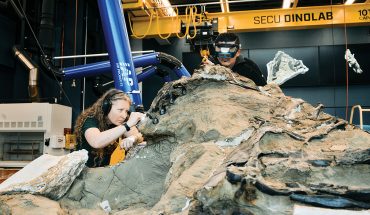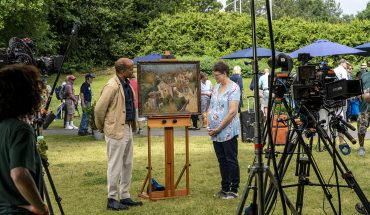How an ancient Roman artifact — used as a planter in a Greensboro garden — found its way to the NCMA
by Hampton Williams Hofer
In 1950, Karl E. Prickett bought a marble garden planter on a trip to New York City and brought it home to adorn his garden in Greensboro. He and his wife, Lynn, lived on a block named “Croup Hill” — the family’s patriarch had invented Vicks VapoRub, and his success provided grand homes for his descendants — and there, the planter held geraniums and other flora for four decades before anyone learned its original purpose.
In 1988, when the Pricketts had both passed away, their nephew Carl Carlson and his wife, Anne, who worked in the antiques business, were called in to help divvy up the furniture. Anne headed over to the Pricketts’ house with a yellow legal pad. “As I looked around, a stone piece caught my eye,” she remembers. “It was very old and had figures carved on the bottom and it was filled with tulips. I thought, Well, this is the most interesting thing I’ve ever seen.”
Anne mentioned the planter to a friend who worked at the Greensboro Historical Museum; they suggested that the marble box might be a child’s coffin, at which point the Carlsons decided to donate it. Museum workers arrived in white gloves with a crane and a padded truck to take the piece to Raleigh.
It turns out the planter was an ancient Roman osteotheke — literally, a “place for bones” in Greek — dating back to the second half of the second century. The ornately carved and incredibly preserved coffin is now on display at the North Carolina Museum of Art. “It illustrates one of the different ways people treated the body of the deceased in ancient times, and what traditions are associated with these funerary rituals,” says Dr. Caroline Rocheleau, the NCMA’s director of research and curator of ancient art.
Until the middle of the second century, the primary mortuary practice for all social classes in Rome had been cremation, before burial of the whole body became the custom. Bodies would be left in a tomb until only bones remained, at which point the bones were stored in an osteotheke. The one on display at the NCMA likely held the ashes or bones of the people whose likenesses are carved into its marble siding.
On one long side of the box, a couple stands, flanked by seated figures in idealized poses reminiscent of philosophers or muses. These sculptural representations indicate the educated status of the deceased. The opposite side of the box shows a procession of playful cupids, linked by a garland, with one cherub dressed as the hero Hercules, wielding a club and lion skin. The artist of the osteotheke, like the occupants, remains unknown.

Linda Roundhill was a visiting contractor at the NCMA lab when the osteotheke arrived 33 years ago. The conservation process included cleaning off all signs of garden life — dirt, stains, and algae — with special cleaning solutions. A consolidant was used to stabilize vulnerable areas of the stone, and tinted fills added where necessary.
The biggest obstacle, Roundhill says, was a large drainage hole that had been drilled through the relief carving. “Trying to make this glaring defect less noticeable without performing a full restoration took a great deal of discussion, as well as trial and error,” says Roundhill. “In the end, we opted to plug it to hide the unattractive interior lining and help the hole ‘blend in’ better. I was never 100% satisfied with that solution, but we do what we can within the restraints of time, resources, and ethics.” The line between ethical preservation and inappropriate creative alterations is a narrow one, Roundhill says: “The bone box was not ‘restored’ but conserved to help it resemble what it was meant to look like without falsifying anything or rewriting its history.”
The osteotheke’s legacy sheds light on the rituals of the past — but also on the ways in which ancient objects are reused differently from their intended purposes. Ancient artifacts often endure mis- and reinterpretation over time: for example, the NCMA’s Egyptian bust of the goddess Sekhmet, a granite statue from 1390 B.C.E., was used for years as a garden bench. And sometimes, their later journeys can be as fascinating as their origins. “Upon discovering that the bone box was once a planter in someone’s garden, people realize that antiquities often have an ‘afterlife’ in the modern world,” Rocheleau says. Museums can benefit when regular people see antiques with fresh eyes and reconsider their original purpose.
So discovered the Carlsons at a luncheon honoring them for donating the osteotheke. “Carl leaned over to me and whispered, I don’t understand all of this. What did we do?” Anne recalls. The couple hadn’t realized its value at the time. But their instinct and curiosity are what gave the osteotheke its next life as a tool for education and exploration. With this centuries-old art restored and now safeguarded against future decay, the NCMA can offer the public a captivating glimpse into customs of antiquity.
This article originally appeared in the November 2021 issue of WALTER Magazine.





